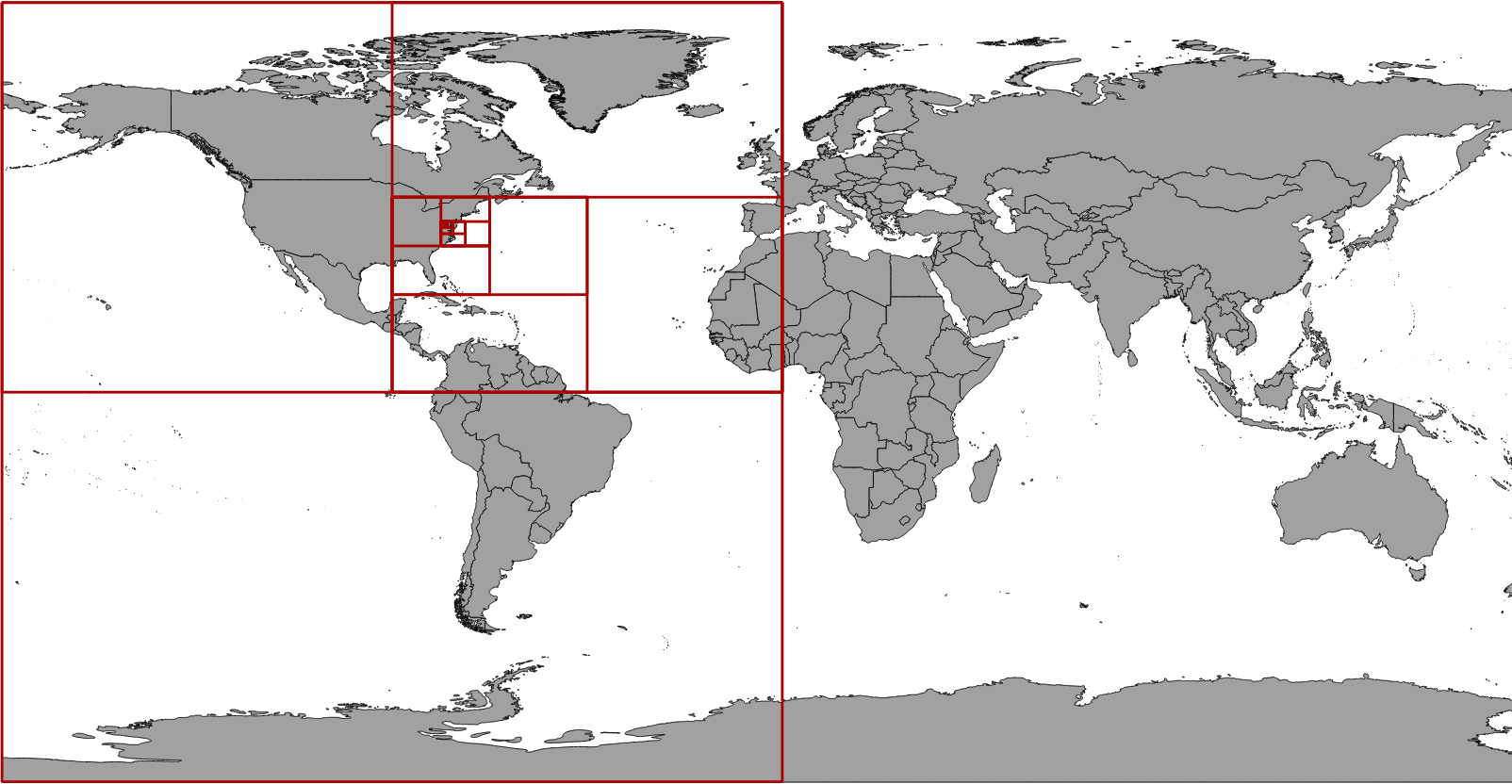GeoMesa Utils¶
Useful utilities are found in the geomesa-utils module.
Simple Feature Wrapper Generation¶
Tools can generate wrapper classes for simple feature types defined in TypeSafe Config files. Your config files should be under src/main/resources. Add the following snippet to your pom, specifying the package you would like the generated class to reside in:
<build>
...
<plugins>
...
<plugin>
<groupId>org.codehaus.mojo</groupId>
<artifactId>exec-maven-plugin</artifactId>
<version>1.3.2</version>
<executions>
<execution>
<id>generate-sft-wrappers</id>
<phase>generate-sources</phase>
<goals>
<goal>java</goal>
</goals>
<configuration>
<mainClass>org.locationtech.geomesa.utils.geotools.GenerateFeatureWrappers</mainClass>
<cleanupDaemonThreads>false</cleanupDaemonThreads>
<killAfter>-1</killAfter>
<arguments>
<argument>${project.basedir}</argument>
<argument>org.foo.mypackage</argument>
</arguments>
</configuration>
</execution>
</executions>
</plugin>
</plugins>
</build>
Geohash¶
Geohashes are a geocoding system that uses a Z-order curve to hierarchically subdivide the latitude/longitude grid into progressively smaller bins. The length of a Geohash in bits indicates its precision.
For example, the table below shows Geohash bounding boxes around the point (-78.48, 38.03) with increasing levels of precision in units of bits (the coordinates are rounded to three decimal places for clarity):
| bits | bounding box | centroid | geohash |
|---|---|---|---|
| 1 | -180.000 -90.000, 0.000 90.000 | -90.000 0.000 | 0 |
| 2 | -180.000 0.000, 0.000 90.000 | -90.000 45.000 | 01 |
| 3 | -90.000 0.000, 0.000 90.000 | -45.000 45.000 | 011 |
| 4 | -90.000 0.000, 0.000 45.000 | -45.000 22.500 | 0110 |
| 5 | -90.000 0.000, -45.000 45.000 | -67.500 22.500 | 01100 |
| 6 | -90.000 22.500, -45.000 45.000 | -67.500 33.750 | 011001 |
| 7 | -90.000 22.500, -67.500 45.000 | -78.750 33.750 | 0110010 |
| 8 | -90.000 33.750, -67.500 45.000 | -78.750 39.375 | 01100101 |
| 9 | -78.750 33.750, -67.500 45.000 | -73.125 39.375 | 011001011 |
| 10 | -78.750 33.750, -67.500 39.375 | -73.125 36.563 | 0110010110 |
| 11 | -78.750 33.750, -73.125 39.375 | -75.938 36.563 | 01100101100 |
| 12 | -78.750 36.563, -73.125 39.375 | -75.938 37.969 | 011001011001 |
| 13 | -78.750 36.563, -75.938 39.375 | -77.344 37.969 | 0110010110010 |
| 14 | -78.750 37.969, -75.938 39.375 | -77.344 38.672 | 01100101100101 |
| 15 | -78.750 37.969, -77.344 39.375 | -78.047 38.672 | 011001011001010 |
| 16 | -78.750 37.969, -77.344 38.672 | -78.047 38.320 | 0110010110010100 |
| 17 | -78.750 37.969, -78.047 38.672 | -78.398 38.320 | 01100101100101000 |
| 18 | -78.750 37.969, -78.047 38.320 | -78.398 38.145 | 011001011001010000 |
| 19 | -78.750 37.969, -78.398 38.320 | -78.574 38.145 | 0110010110010100000 |
| 20 | -78.750 37.969, -78.398 38.145 | -78.574 38.057 | 01100101100101000000 |
| 21 | -78.574 37.969, -78.398 38.145 | -78.486 38.057 | 011001011001010000001 |
| 22 | -78.574 37.969, -78.398 38.057 | -78.486 38.013 | 0110010110010100000010 |
| 23 | -78.486 37.969, -78.398 38.057 | -78.442 38.013 | 01100101100101000000101 |
| 24 | -78.486 38.013, -78.398 38.057 | -78.442 38.035 | 011001011001010000001011 |
| 25 | -78.486 38.013, -78.442 38.057 | -78.464 38.035 | 0110010110010100000010110 |
The bounding boxes corresponding to the Geohashes in the table above are shown as red polygons on this map:

The org.locationtech.geomesa.utils.geohash.GeoHash class provides tools for working
with Geohashes. The data for the table above may be generated with the following Scala code:
import org.locationtech.geomesa.utils.geohash.GeoHash
for (p <- 1 to 25) {
val gh = GeoHash(-78.48, 38.03, p)
println(s"""$p ${gh.bbox.toText} ${gh.getPoint.toText} ${gh.toBinaryString}""")
}
Base-32 Encoding¶
Geohashes are encoded as strings with the following base-32 representation:
| dec | binary | base-32 | dec | binary | base-32 |
|---|---|---|---|---|---|
| 0 | 00000 | 0 | 16 | 10000 | h |
| 1 | 00001 | 1 | 17 | 10001 | j |
| 2 | 00010 | 2 | 18 | 10010 | k |
| 3 | 00011 | 3 | 19 | 10011 | m |
| 4 | 00100 | 4 | 20 | 10100 | n |
| 5 | 00101 | 5 | 21 | 10101 | p |
| 6 | 00110 | 6 | 22 | 10110 | q |
| 7 | 00111 | 7 | 23 | 10111 | r |
| 8 | 01000 | 8 | 24 | 11000 | s |
| 9 | 01001 | 9 | 25 | 11001 | t |
| 10 | 01010 | b | 26 | 11010 | u |
| 11 | 01011 | c | 27 | 11011 | v |
| 12 | 01100 | d | 28 | 11100 | w |
| 13 | 01101 | e | 29 | 11101 | x |
| 14 | 01110 | f | 30 | 11110 | y |
| 15 | 01111 | g | 31 | 11111 | z |
By this convention, the 25-bit Geohash that contains (-78.48, 38.03) described above would be encoded as “dqb0q”:
01100 10110 01010 00000 10110
----- ----- ----- ----- -----
d q b 0 q